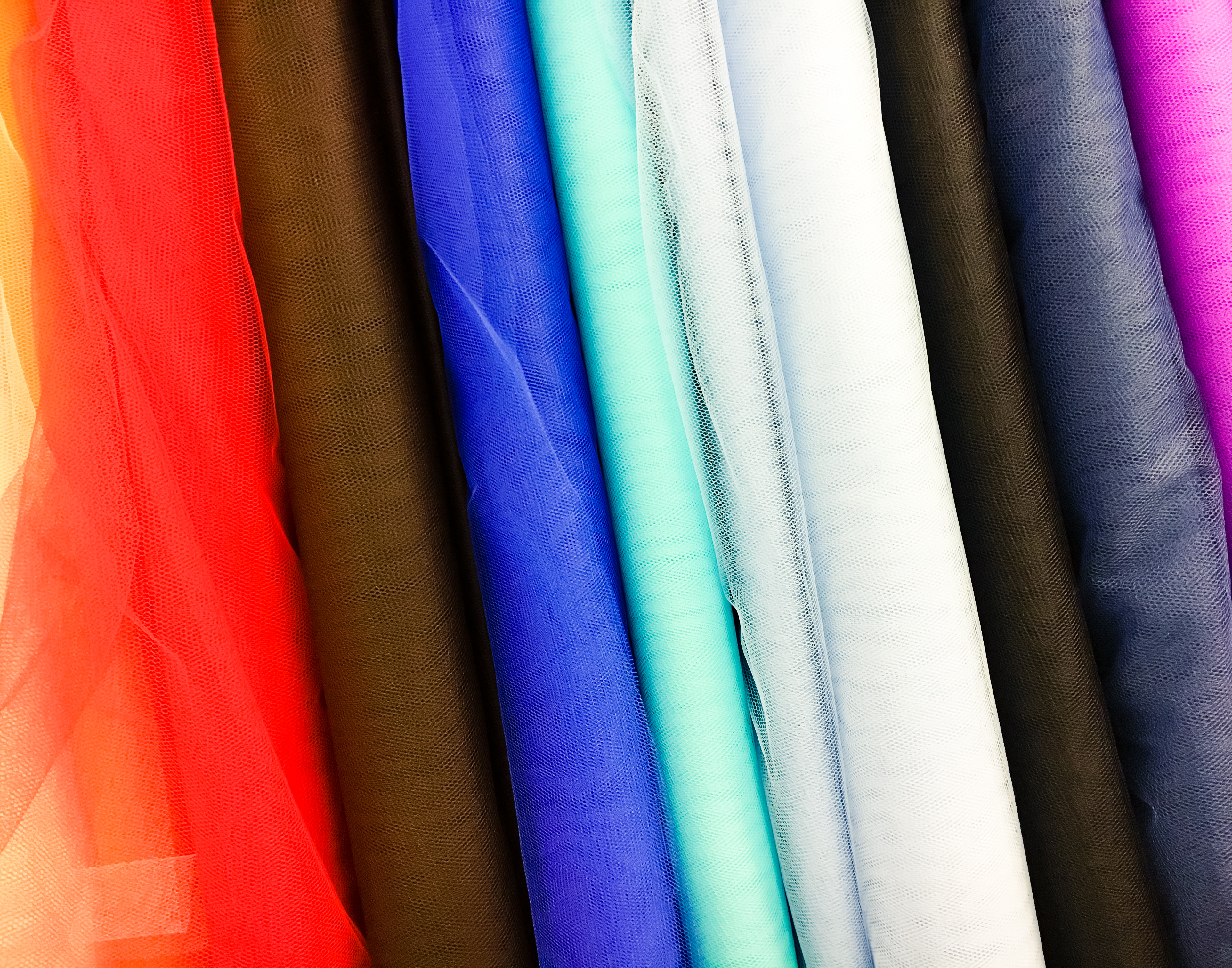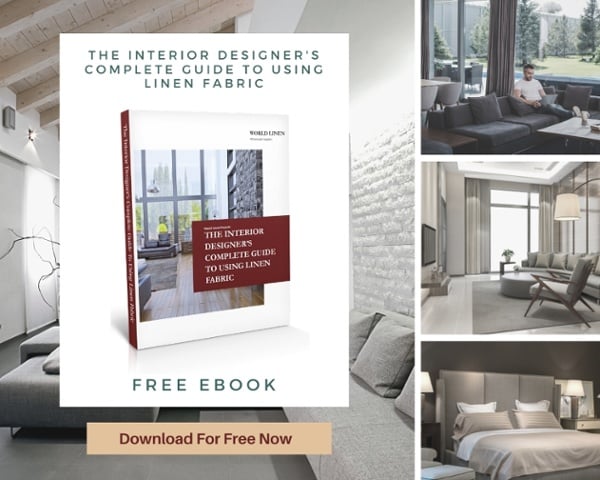Picking the right chair upholstery fabric can make or break a project, especially considering that today, people want both style and comfort in the furniture they choose. After all, buying furniture is a significant investment, so it’s no surprise customers want their chairs to retain their luxurious look and enjoyable feel for the long-term.
Below we’ll explore five popular types of chair upholstery fabrics:
- Linen
- Cotton
- Wool
- Leather
- Synthetic
Linen
Linen is one of the most popular upholstery fabrics used in the construction of chairs and other furniture. That’s because linen is extremely durable and easy to care for - two important traits when considering how much of an investment furniture typically is for buyers.
because linen is extremely durable and easy to care for - two important traits when considering how much of an investment furniture typically is for buyers.
Linen also ages well and even gets softer … even after it is cleaned repeatedly. While most fabrics show wear and tear after multiple uses and washes, linen is the opposite, making it a great long-term investment.
For clients who prioritize buying sustainable products, linen is by far one of the most sustainable upholstery fabrics available. When growing flax that is used in the creation of linen fabric, very little water is required. Farmers do not need to irrigate or fertilize during the growing process, which also typically requires fewer pesticides, herbicides and fungicides.
When a flax plant is harvested, very little is wasted, and even when the upholstery is no longer needed, it is biodegradable - adding an extra layer of sustainability. Linen is also moisture resistant, hypoallergenic, breathable and resistant to bacteria.
Upkeep of linen upholstery is easy when compared to several other fabrics. For high traffic areas like chairs, linen only requires occasional vacuuming to maintain its care. Linen fabric also resists stains easily.
Chair slipcovers can even be simply put into the washing machine and dryer, washed by hand or taken to the dry cleaners, depending on a buyer’s preference. While fabric shrinkage can occur with linen, avoiding hot water and dryer heat and simply placing a slipcover back onto a chair when it is damp will do the trick and help a customer avoid shrinkage.
Linen, like many upholstery fabrics such as cotton and rayon, can wrinkle. With slipcovers, in particular, you can easily combat this by putting the fabric in the dryer on low heat or using an iron set on low to medium-hot.
Cotton
Like linen, cotton is made with natural fibers from plants. Especially in products like bedding in which cotton’s fine fibers can be weaved into higher thread counts, cotton may look like a piece of appealing upholstery fabric.
However, there are many qualities of cotton that may not make it a top choice for chair upholstery fabric.
While cotton can easily absorb dyes for displaying colorful patterns on your chair, it can also absorb dyes from other fabrics such as the clothes a person wears or decorative pillows.
In the case of cotton slipcovers, shrinkage can be a problem. Cotton is also not as strong as linen … up to 50% less in strength. Cotton is a very comfortable fabric, especially when new. However, it can lose some of its softness and begin to disintegrate with repeated use and washing.
Cotton is a very breathable fabric, increasing its comfort, especially in warm environments. However, it is very absorbent as well. While this may be handy for products like towels, that might not be ideal for a chair.
You can compare linen and cotton in more detail by checking out our article, Linen Vs. Cotton: Which Is Better For Your Home?
Wool
Wool is a natural fiber that is sourced from animal hair. Wool is also durable, making it a wise investment when upholstering a chair.
upholstering a chair.
However, unlike linen, wool isn’t known for its comfort. In fact, it can feel scratchy to the touch and can be difficult to clean since it can form felt. Felting occurs when wool fibers experience temperature shock and rubbing. Some of the wool’s scales can lift up and as fibers rub up against one another, they can become attached to nearby fibers. This causes the fabric to tighten and form felt.
When wool is combined with a blend, however, comfort levels increase as does the ease of cleaning the upholstery.
Leather
Constructed using animal hide, leather is an elegant choice for upholstered chairs. Overall, leather is durable, hypoallergenic, easy to clean and can look and feel better with age. There’s also a special look of elegance that leather brings to a room that is difficult to overlook.
In addition to these qualities, leather is breathable, meaning that it absorbs and releases moisture, making its comfort level a top consideration.
One important consideration of leather, however, is that despite its durable nature, it can be damaged more easily than other types of upholstery … especially if households are full of pets and kids.
There are also several grades of level, impacting its durability and overall look. Full-grain leather, for example, can withstand pressure and shows the natural grain of the hide since it has not been buffed out to limit imperfections. Bonded leather, on the other hand, isn’t true leather since it is made by combining scrap pieces of leather with synthetic material. A polyurethane or latex glaze is then applied over top.
If you’re considering leather for your chair upholstery, the grade of leather you choose can have a significant impact on the quality of the overall product. Bonded Leather can start to peel over time, and all leather can absorb the oils from your skin which can create discoloration spots.
Synthetic
Textiles that use synthetic fibers are usually constructed by combining natural materials with man-made fibers. Examples include polyester and rayon.
Examples include polyester and rayon.
Polyester, in particular, is commonly used when upholstering furniture because of its high comfort level and easy care. Polyester, which is often derived from petroleum, is often used in blends with other fabric types such as wool. This combination improves the texture of the fabric but can exacerbate a potential pilling problem. Polyester can also stain easily.
Rayon is formed by using a chemical to break down natural fiber by-products such as wood pulp and bamboo. The mixture is then sent through spinnerets to create a fiber that lies somewhere in the middle of synthetic and natural.
Rayon often mimics silk, giving it a luxurious look when upholstering a chair. Rayon can be more difficult to maintain and can be easily damaged by liquid spills and water-based cleaning agents. That’s because when subjected to moisture, rayon fibers lay flat and do not bounce back. So if an individual sits on a chair wearing damp clothes or after perspiring, irreversible damage can occur.
Other synthetic chair upholstery fabrics to consider include microfiber, nylon and acrylic.
The Best Upholstery Fabric?
Each upholstery fabric type has its own set of pros and cons. If you’re looking for a fabric that is durable, comfortable and luxurious all in one, linen is a top choice.
Linen offers a high level of sustainability, is easy to care for and gets more comfortable as it ages, making this upholstery fabric for your chair a smart short-term and long-term investment.





